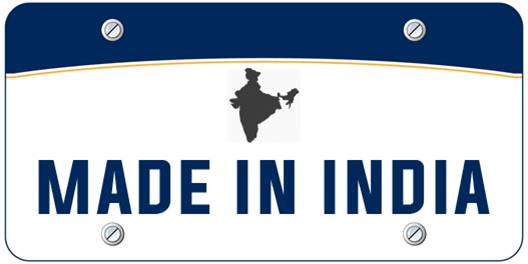‘MADE In India’ before ‘MAKE In India’
‘Make in India’ can be a great invitation by national statesmen to invest in India. This is a MACRO subject. It can be very good for the Indian economy.
On the other hand, ‘Made in India’ must be the Gold Standard promise to customers, by corporate leaders. This is a MICRO subject. It can build customer loyalty.
In my view, if we can demonstrate our capabilities, with the existing resources, to establish ‘Made in India’ as a brand, investments will flow. ‘Made in India’ does not require capital investment. Only diagnostic and behavioral skills.
So what stands between us and the creation of a super-brand ‘Made in India’? Knowledge. Knowledge about how effective we are with our customers. And knowledge about the efficiencies of our processes that deliver goods and services to our customers.
Where should we start? An ideal strategy would be to start by addressing how effective are we in delighting our customers? However, this requires Building Quality into Design. It is an investment. It has associated risks.
As a more practical strategy, I would recommend that we first improve the efficiencies of management processes that drive an organization. Through Quality Improvement of what already exists. This is a great opportunity to unlock the chronic waste and related Cost Of Poor Quality (COPQ) that we have budgeted for. By improving the efficiencies of processes we can reduce COPQ… and that goes straight to the bottom line!
Tata Steel woke up to the COPQ alarm in 1989. They confessed to having a COPQ of 30% of all budgeted costs. For ten years thereafter, Tata Steel, captained by Dr J J Irani, worked on becoming the lowest cost steel producer in the world, by internalizing the ‘Juran on Quality Improvement’ methodology. And they did become the lowest cost steel producer in the world, in 1999.
Several auto companies followed the Quality Improvement project-by-project approach used by Tata Steel. Amongst others, these included Mahindra Tractors, Punjab Tractors, Caterpillar, Cummins, and Rane.
Over the years, the Tata Group, the Aditya Birla Group, and the Mahindra Group have embraced Quality Management as a way of life, and even carried this management culture to various BRIC countries, EU countries, and the Americas. Proving that India can make it, and make it better.
The real issue is that the common person in India has not experienced ‘zero defects’ in daily life. Their suppliers of services are significantly from governmental bodies. The common person’s needs are basic – food, shelter, water, electricity, education, healthcare. Can you conjecture the COPQ locked in the governmental bodies that provide these services? My guesstimate is 40% of their respective budgets! Is that an alarm for the PM and CMs?
My recommendations to the decision making authorities in India are:
- Halve the COPQ locked and legitimized in the budgets of governmental bodies, through Quality Improvement, by 31 December 2016
- Plough the savings into projects that improve the ‘Quality Of Life’ of the common people
- Measure results in terms of a shrinking ‘Below The Poverty Line’.
In other words, ‘Made In India’ can, and will, attract ‘Make In India’.
———————-
Click here to buy his new book: Quality Fables–now available on Amazon Kindle
———————–
These images were originally found on:
http://www.makeinindia.com/wp-content/uploads/2014/07/landing-600.png
http://leanapplied.com/blog/wp-content/uploads/2012/10/no3.jpg
http://cdn5.nextbigwhat.com/wp-content/uploads/2013/01/irctc2.jpg


Hello,
Nice content. I liked how you have explained everything step by step, starting with macro then micro etc. There are some Indians abroad that are already working towards and already received many awards for their achievement http://bit.ly/1ME05Qn